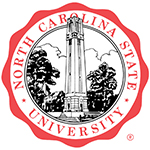Risk index tool update
Principal investigator

David Jordan
NCSU
Co-PIs
 Gail Wilkerson, NCSU, Raleigh, N.C.
Gail Wilkerson, NCSU, Raleigh, N.C.
Rick Brandenburg, NCSU, Raleigh, N.C.
Barbara Shew, NCSU, Raleigh, N.C.
Updating of NCSU risk index tool for adoption and use in target countries
Research/project objective(s)
The main objective is to modify the North Carolina State University (NCSU) risk index software tool (www.peanut.ncsu.edu/riskmgmt) for North Carolina in excel spreadsheet format for North Carolina peanut production and develop a template for a similar risk tool for other states in US and Peanut Innovation Lab countries to aid farmers and their advisors in making informed decisions on the best options for production practices, including disease and pest management.
Relation to the overall mission of the Peanut Innovation Lab
The Peanut Innovation Lab plans to focus significant effort on disseminating the results from the previous research to famers, seed producers and their advisors (e.g., extension agents).
Rationale for including this activity as an initial activity
Although there is considerable information available on the interrelationships of peanut pests and practices that influence their occurrence, development and management, many constraints are often addressed individually with limited understanding or consideration for other constraints in the system. Traditional methods of outreach in written or electronic formats do not inform users on interactions of practices and aggregate or cumulative risks in an easy manner. A web-based risk tool developed at NCSU allows users to look at how changing a practice for one pest influences risks associated with other pests, including input costs associated with practices that may reduce risk for a single pest or group of pests. Developing the risk tool for African situations will provide an opportunity to develop detailed biotic and abiotic crop calendars that can be used by extension services and ministries of agriculture to relay timely alerts to farmers and their advisors. Once the platform is developed countries can then develop the tool, GAP maps, and crop calendars for their production systems. The current risk tool at NCSU is web-based but was developed in 2004-2005 and the programming is complicated and modifications require programmer assistance. To be effective the risk tools needs to be created in excel spreadsheet format so that scientists can easily change index values and add new components to the risk tool as more information is gathered and improved technologies (varieties, for example) become available. This will be even more important for Peanut Innovation Lab countries outside of the US.
How research outputs will enhance the competitively awarded research activities
Once Peanut Innovation Lab Risk Tool Template is developed and made available, other countries and states in the US can develop a custom risk tool for their situation. Ultimately, the combination of the initial development of the risk management tool, the validation of the tool and filling in gaps in research that can improve the tool will create greater understanding of peanut production systems and implementation of practices that minimize risk, increase yield potential, and improve quality and food safety.
Work plan (12 months: May 2018 – April 2019)
Jan-Apr 2018 – Present risk index concept to researchers in partnering countries via remote linkage. Develop GAP maps and prepare a list of each production and pest constraint for peanut with a regional emphasis.
Apr-Jul – Conduct workshop in Ghana and Malawi to collect indices, costs of interventions, yield potential and production and stress calendars.
Aug-Dec – Produce version 1 of risk tool and provide to partners.
Jan-Apr 2019 – Conduct workshop in Ghana and Malawi to review version 1. Produce version 2 of risk tool and provide to partners.
